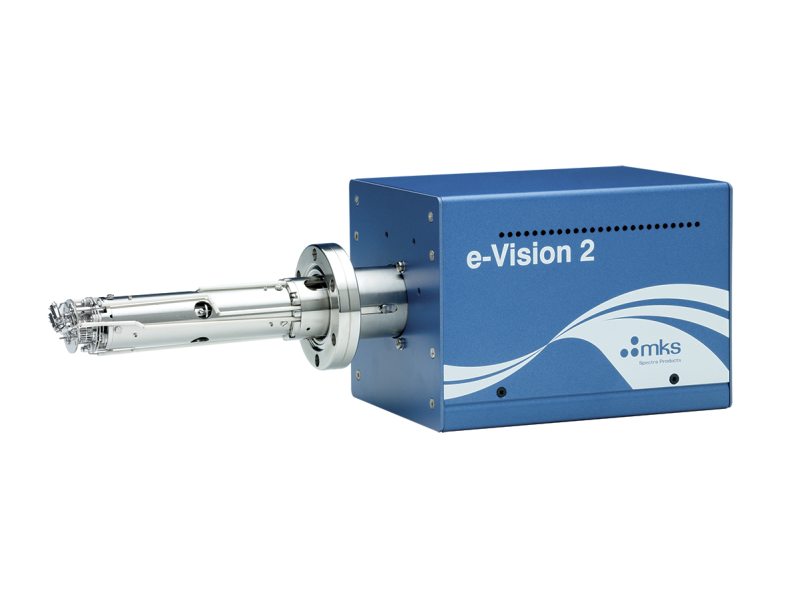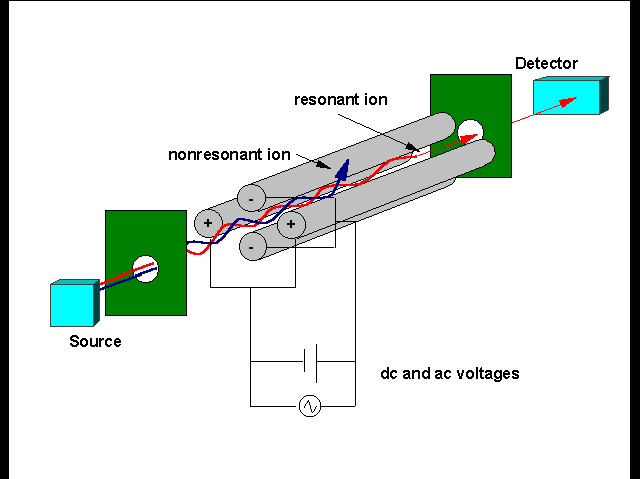A Residual Gas Analyzer (RGA), otherwise known as a quadrupole mass analyzer (QMS), is a small mass spectrometer that operates under vacuum to measure which elements, and how much, are flying around in a vacuum chamber.
it reads out spectra like this:
The X-axis on an RGA spectrum represents (molecular mass)/(molecular charge)
example: Oxygen generally has a mass of 16 AMU (isotopes exist, yielding +/- mass, in whole numbers). But, like most elements, oxygen is usually bonded with other atoms in molecules. Oxygen forms a paired gas, O2, with itself, O2 = 32 AMU. This molecule, like most molecules, generally has neutral charge (#protons=#electrons); but the RGA rips off electrons, Ionizing the molecules with charges of -1, -2, etc...
With that in mind let's reexamine the X-axis on an RGA spectra: (molecular mass)/(molecular charge).
The first ionization of O2 will yield a spectra peak at 32/1=32
the second ionization of O2 will yield a spectra peak at 32/2=16 (labeled in red above)
The Y-axis represents the partial pressure that a given (molecular mass)/(molecular charge) represents within the total pressure of the chamber.
Video File: How RGAs work
Discussion: how RGAs work and how the data can be ambiguous.
Future sections:
ionization continued
cracking
RGA hardware
filament
faraday cup
electron multiplier
calibration
tuning
external resources:
CERN tutorial on interpretation of RGA spectra



